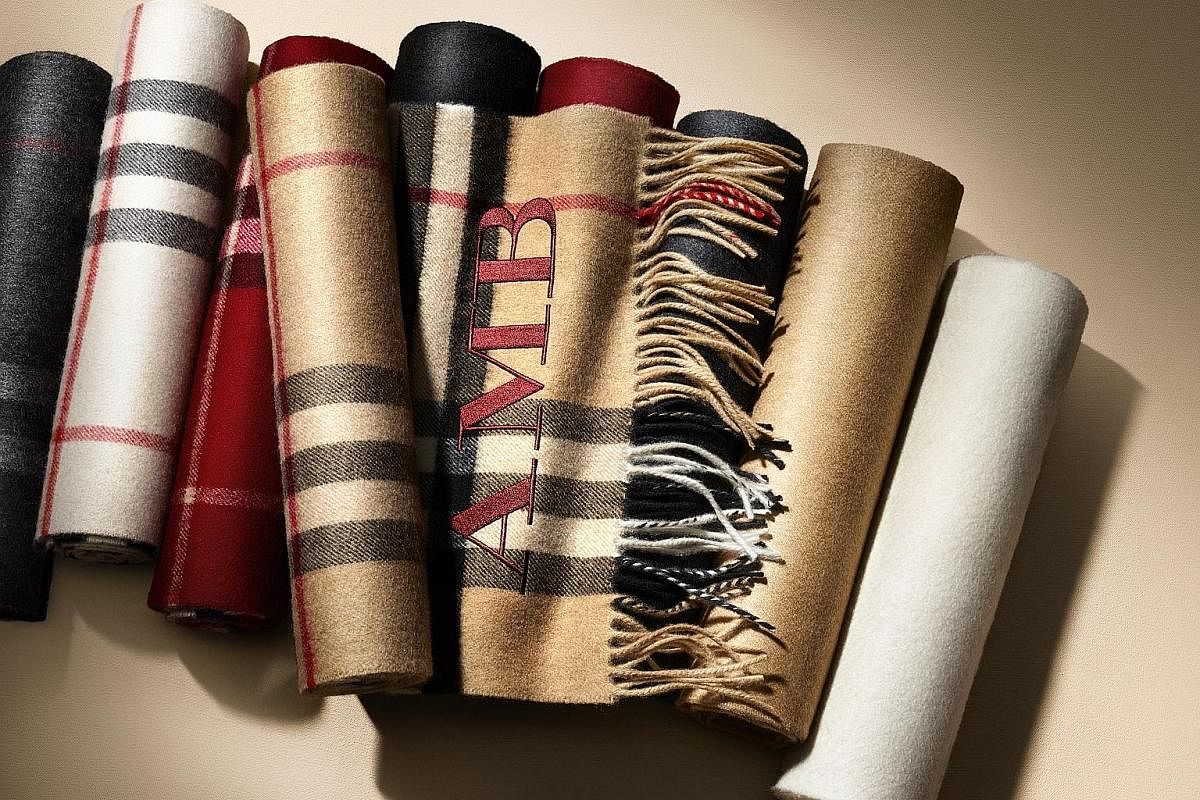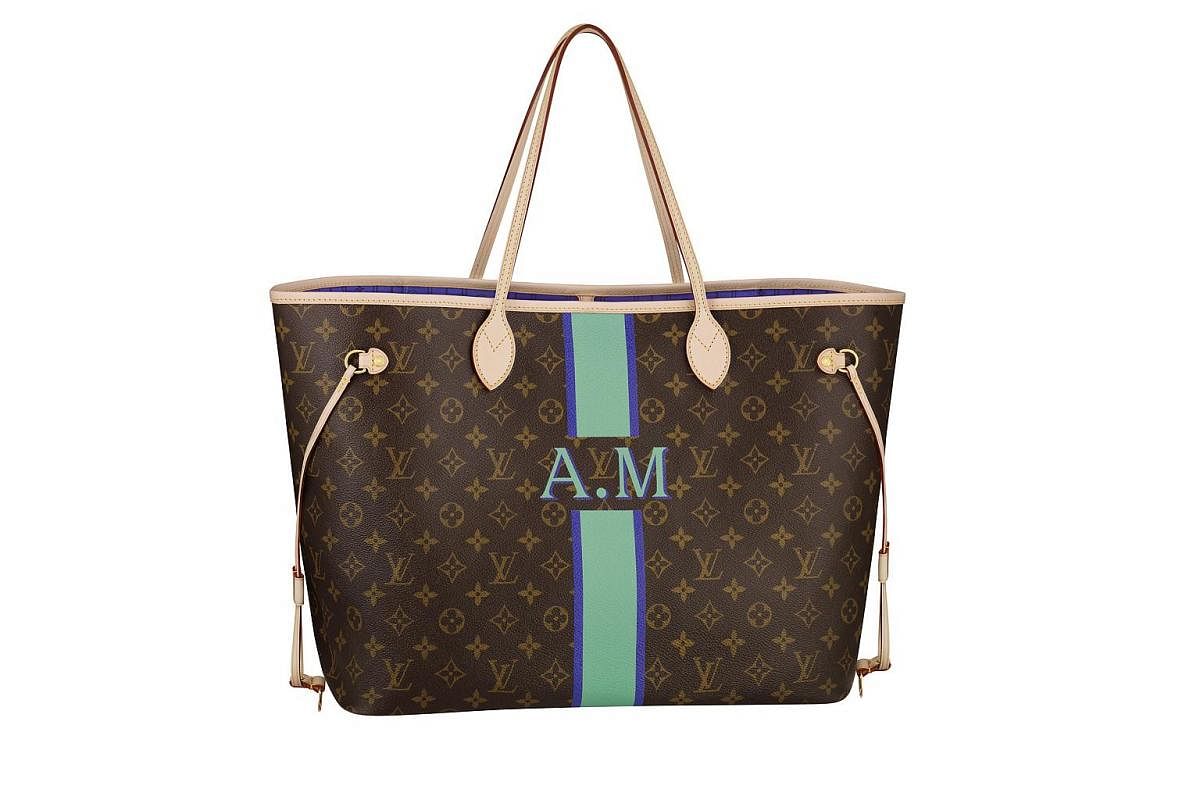High-end brands now letting shoppers customise items
Creating a bespoke piece at luxury brands is easier now, as these labels offer customisation services that help customers stand out from the crowd





Back in the day, having a custom item from a luxury brand meant owning a completely bespoke piece - often produced after a series of face-to-face meetings with a skilled artisan and an agonisingly long wait for the final product.
And while these individualised creations allowed customers to have a say in design, it came at a substantial cost - usually starting at $30,000 - making it affordable only to those with deep pockets.
This has changed.
In the past two years, at least four luxury brands here have opened stores that give shoppers the option of customising their luxury buys.
In January this year, Italian luxury fashion house Gucci opened a new store at Ion Orchard - the first in South-east Asia with a do-it-yourself (D-I-Y) section.
With prices starting at $6,080, the service allows customers to personalise the brand's iconic Dionysus bags with various patches featuring designs of bumble bees, butterflies, lizards, dragonflies, snakes, roses and peonies.
Selections of trim - which come in a variety of colours and skins - and monogrammed letters embellished with Swarovski crystals can be added.
Shoppers can also get Ace sneakers personalised with their initials, which start at $1,030.
Last year, Italian luxury goods house Bottega Veneta opened its first customisation atelier in Singapore, also located at Ion, which lets shoppers personalise products such as their iconic Knot and Veneta bags by choosing from a range of leather skins and adding their initials on the bags.
Prices start at $1,560 for a customised piece.
Burberry launched a scarf bar at its flagship boutique in The Shoppes at Marina Bay Sands in 2015, offering customers the option of customising their scarves with up to three initials for free.
The service is now also available at its Ion store.
Louis Vuitton offers made-to- measure services here, allowing clients to select from six shapes for a bespoke bag, customise the Louis Vuitton men's driving shoes or personalise the brand's emblematic trunk. Prices vary depending on the request.
So why this move towards customisation?
It seems that consumers are no longer content with having items that look just like those owned by other people, say industry players.
Today's digitally savvy and discerning millennial shopper, they say, expects everything to be personalised, from his Spotify playlists to Subway sandwiches.
According to Mr Marco Bizzarri, chief executive of Gucci, customisation was "the natural next step" to cater to the demands of its growing numbers of millennial consumers.
"The consumer these days likes to be unique and he makes it clear through his purchases that he wants to do as he likes," he says.
"Millennials make up nearly 50 per cent of our business, so it is important for us to evolve and give them a chance to be involved in creating unique products."
The creative director of Bottega Veneta, Mr Tomas Maier, says of the Italian brand's move towards customisation: "Our consumer is an extremely discerning one - one who may not necessarily want something unique just to stand out, but more because he has very specific tastes.
"It is important for us to offer customisation to our consumers. It should not be something that is so niche that it is out of their reach."
The Ion store is the 20th outlet around the world to house a Bottega Veneta customisation atelier, which was first launched in the brand's Sant'Andrea store in Milan in May 2015.
This move towards mass customisation - the catchphrase the industry uses for such services - is fresh to luxury fashion.
However, the trend is by no means new.
It was first spearheaded by sportswear giant Nike, when it launched its highly successful mass customisation platform NikeiD in 1999. The service allowed customers to personalise the look and feel of their kicks.
But customisation for the masses did not have the same take-up in the luxury world, which is reserved for a niche selection of deep- pocketed clients.
Associate Professor Leonard Lee, who is also Dean's Chair at the National University of Singapore Business School, says: "One reason for this could be hesitation on the brand's part to dilute its image - hence keeping customisation in the past available to only a niche market."
But the tide has changed, says Mr Chris Chong, CEO of Orchard Turn Developments, which manages Ion Orchard.
He was integral to identifying the trend and working with various brands to introduce personalisation services at the mall over the past three years.
The 44-year-old says: "Shoppers today are looking for something above and beyond the basics.
"They know what they want, like to express themselves as individuals and buy items that they feel best portray their lifestyles, personalities and styles."
The boom of social media, which constantly bombards users with pictures and information about all that is new and covetable, has exacerbated the need to stand out as a brand.
But there is a downside for fashion retailers. Consumers these days can also just as easily get turned off by items that achieve "viral" status on their social media feeds.
University student Megyn Lim, 20, says: "When I was younger, I would often want those 'it' bags I saw people carrying.
"But these days, with Facebook and Instagram, if I see a certain bag in every other photo, then I no longer feel like buying it.
"I mean, why would I want to look like everyone else?"
It is no surprise then that the need for personalisation is particularly felt in the fashion space, given how fashion is inherently about being unique and expressing individuality. The trend also has its benefits for the brand, as the tailored products are usually carefully considered purchases.
This, says Prof Lee, creates the "Ikea effect".
"This means people are more likely to feel psychological ownership over a product if they have invested effort into creating it.
"A collaborative service such as customisation can therefore lead to customer retention and more brand loyalty over time," he adds.
For consumers such as finance manager Tze Wei Lin, these new service offerings by luxury houses are worth paying more for.
The 31-year-old recently bought a pair of personalised Ace sneakers from the Gucci store at Ion. He paid more than $1,000 for them.
"In the past, most of us were priced out of the luxury market. But these days, as affluence grows, so does the ability of more people to buy luxury goods," he says.
"Customisation makes the offerings much more enticing.
"The uniqueness of a product these days is not because it is luxury. It is more because it is personalised and unique to me as an individual."
Join ST's Telegram channel and get the latest breaking news delivered to you.
A version of this article appeared in the print edition of The Straits Times on April 13, 2017, with the headline High-end brands now letting shoppers customise items. Subscribe

